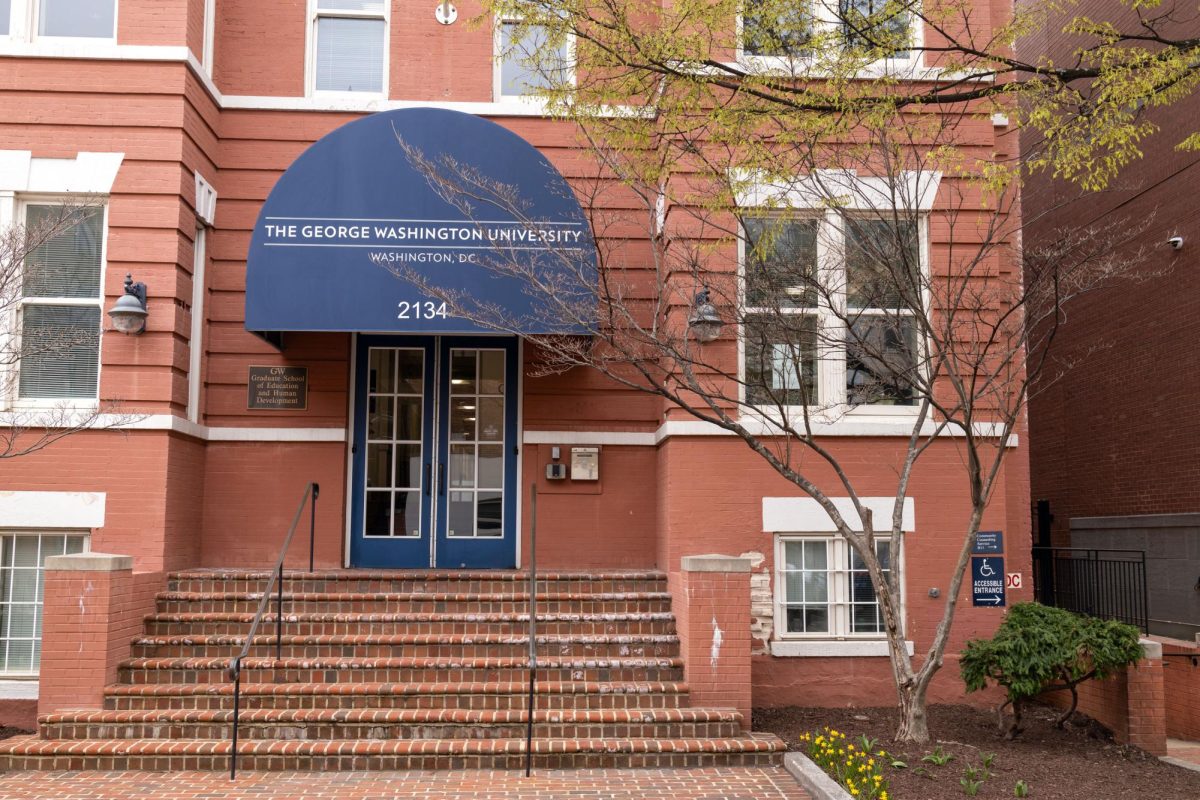Correction appended
When Columbian College of Arts and Sciences officials penned a financial plan three years ago, they hoped to pay for more professors with a slow, steady uptick in revenue by bringing in more graduate students.
Instead, they got a surge.
A massive influx of Chinese students has ballooned the graduate statistics program threefold, already carrying the entire school past its financial goal post with two years left in the plan.
“My first thought was, ‘Wow,’ ” Tara Wallace, associate dean for graduate studies, said.
With 90 percent of the 283-student statistics program coming from China, international student growth has helped GW’s bottom line, and the Columbian College’s operating budget is now expected to grow by 12 percent over the next two years.
After exceeding expectations for graduate enrollment growth, Columbian College administrators are trying to make that increase sustainable.
Officials have scrambled to reshuffle resources, adding more Ph.D. students to assist undergraduate teaching, as well as moving some graduate programs and classes off campus to comply with a city rule that limits the number of students taking classes on the Foggy Bottom Campus.
Wallace said the statistics graduate program has responded well, even when more than 600 applications poured in this year. It has been able to keep its selectivity high, with about 100 new students expected next year. Statistics is now Columbian College’s largest graduate program, accounting for most of the 8 percent uptick in enrollment.
It added four faculty members this year, brought in government statisticians to teach courses, and has moved some courses to Arlington, Va.
The statistics program got its big payoff unexpectedly, when it housed a summer program for Chinese government workers from 2009 to 2011.
“They went back and told their colleagues what a great place GW is,” Dean Peg Barratt said about the Chinese National Bureau of Statistics team. “We reached out through these programs, and these students keep coming.”
A financial boon
Spurred by graduate enrollment growth, the Columbian College’s operating budget is now projected to grow by 12 percent to $104 million over the next two years.
Last year, the University counted $109 million in tuition revenue from international students overall, according to a report by NAFSA: Association of International Educators.
GW hired more than three dozen new professor positions over the last four years, with 40 percent of those in the physical sciences. Another 17 faculty positions are expected to be added over the next two years.
That growth is a win for both the Columbian College and the University, said Susan Sampsell, the college’s finance chief.
“So from our perspective, as a college, faculty resources are huge for us, because we want to have a better student-faculty ratio,” Sampsell said. “At the same time, the University wants us to invest. In fact, faculty and resources that also provide a University return [with] research.”
Those research funds – another revenue source – have only grown slightly in the Columbian College recently, reaching around $12 million a year. The University is relying in part on research dollars to pay for the science building, which, at $275 million, is the most expensive in GW’s history.
International implications
The Chinese-driven enrollment growth is not unique to the Columbian College or to the statistics program. In the last three years, the number of graduate international students from China has more than doubled to 1,239.
The University has broadened its international recruiting strategy, with admissions beginning to travel to countries like Saudi Arabia and the United Arab Emirates last year.
A statistics professor traveled to China last year to talk to students at top universities there, helping bring in more applications, Modarres said.
Sampsell said the college is now searching other parts of the world for international growth, a big part of the University’s strategic plan. She said a recruiter is currently on a trip through Mexico to try to bring graduate students to the University.
Barratt said this would help the college become more global after initially being carried by Chinese growth.
“They are reaching out to potential students from around the world. We don’t want it to be largely Chinese,” she said.
Faculty are also pining for GW to diversify its international student population.
Anthony Yezer, an economics professor, said at a Faculty Senate meeting this month that the University won’t be truly global until it recruits from more low-income countries.
“I’ve noticed whatever country’s economy is prospering, given our tuition, we tend to get a flood of those students,” he said. “We really [should think] of ourselves [as] trying to attract international students from everywhere.”
Karin Fischer, a Chronicle of Higher Education senior reporter who focuses on the business of international education, said universities around the country are grappling with ways to diversify their international populations.
She said countries like Saudi Arabia and Brazil have invested in financial aid programs for international education, and are likely the next growth areas.
“There are a number of countries with growing middle classes that might value an American college degree, but you can’t find another China,” she said.
Making growth sustainable
Sampsell noted that the exponential growth will likely level off, unless the college plans ways to meet the market needs of graduate programs. The college has also put about 10 percent of revenue from its five-year plan toward marketing graduate programs, which it sees as an investment toward further growth.
Universities around the country have begun to see flatlining growth in their graduate programs. In particular, applications from international students grew by just 1 percent this year after two years of double-digit growth, according to a report from the Council of Graduate schools this month.
The University has tried growing its graduate student population – not undergraduates – as one of the only ways to boost tuition revenue because it is restricted by an enrollment cap in D.C.
Moving programs off campus has sometimes drawn criticism from the departments GW wants to relocate. When Barratt tried to push the philosophy department to the Mount Vernon Campus two years ago, more than 100 professors signed a petition, helping to reverse the decision.
The college also recently moved the graduate museum studies program and the art therapy program blocks from campus.
Wallace said while the Columbian College is still looking for more classes and programs to move, it would only do so if it had the program’s support.
“It’s done in collaboration with the program. It’s much easier if the program isn’t dependent on Foggy Bottom resources,” she said.
This post was updated May 6, 2013 to reflect the following:
The Hatchet incorrectly reported that GW pulled in $1.09 million from international students overall, according to a report by NAFSA: Association of International Educators. GW actually collected $109 million, according to the report. We regret this error.






